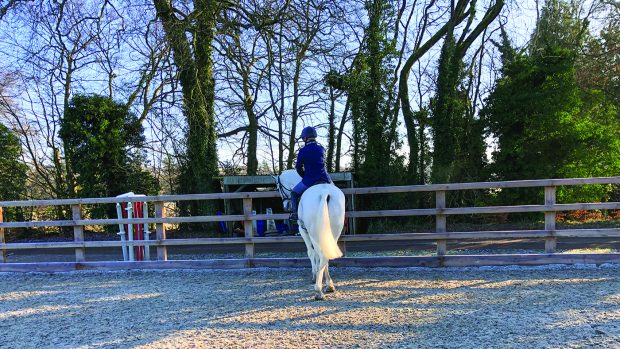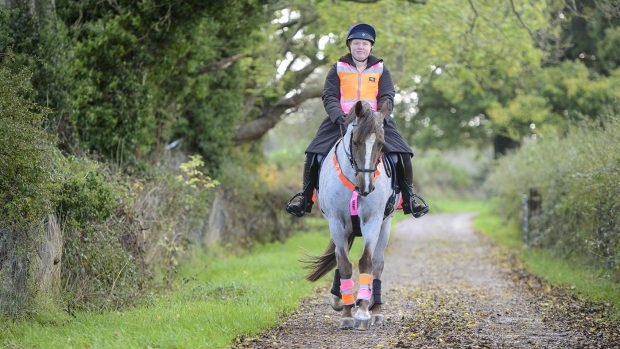Laura Tomlinson is a world-renowned dressage rider who made her first senior team appearance in 2006 at the World Equestrian Games in Aachen. She has since accrued a succession of medals, including team gold and individual bronze at the London 2012 Olympics on her great campaigner Mistral Højris. She is currently nurturing a string of young horses through the levels. Here she shares her advice on how to improve flying changes.
Training the stars
My small tour horse, Fallatijn Van Kairos, used to get really tense and flighty during his changes. Over time, using the following exercises and advice, I was able to encourage him to relax and they improved.
Flying changes are all about the balance and quality of the canter. If the canter is right, and you are both in balance, then you stand a realistic chance of teaching your horse a quality change each way rather than a mere change of direction.
These are some of the exercises I use during training of flying changes.
How to improve flying changes
1. Straightness is key when trying to get more “jump” and lift in a flying change. If your horse swings, he loses that throughness, but when he is straight and is allowed freedom with the inside hand, he has the ability to reach in the change.
If your horse tends to swing or jump to one side in the change, try riding large around the school with the track on the side your horse tends to fall in to. Ride into walk and then pick up counter-canter. A few strides later, while still benefiting from the uphill collected upward transition, ask for the change to the outside — with the track stopping the swing.
Your horse may refuse to change because he feels he can’t do it if he cannot swing out. In this case, curve away from the track by a metre or so and ask for the change again. When he can do this easily, return to the track and try again.
Improve your riding skills with Horse & Hound’s new online rider confidence course. Learn how to overcome low confidence and gain a positive mindset
2. If your horse makes obedient but flat changes, work on creating more impulsion in the canter. He must be in a canter you would want to jump a five-bar gate out of — think of a bouncy rubber ball.
When you have this canter, ask for the change, keeping the energy stored. The change acts as the release and becomes off the ground.
3. If your horse is flighty in the changes, ride on a serpentine so you are always turning before and after a change. Also, try riding a small circle directly after the change so that the turn does the work for you.
It’s important not to get in the habit of hanging on to his mouth after the change to slow down again, as this quickly becomes a vicious circle with your horse anticipating the discomfort in the mouth, causing him to tense up even more.
Things to consider when trying to improve flying changes
- Your horse should be able to do nice walk-to-canter and canter-to-walk transitions without jogging or leaning on the reins or using the reins to balance. When he does these correctly, you know you can collect the horse and ride forwards while remaining in balance.
- Transitions build strength in your horse’s core and quarters, building push-power required for expressive and improved changes.
- The only aid for the change is the lower leg — you should be looking up and straight ahead, with your shoulders parallel to your horse’s. For example, the left lower leg slides back to initiate the horse to change to the right. A little outside rein half-halt will aid the straightness and balance through the change.
- Remember that most horses learn a change one way much easier than the other, so don’t worry if you are struggling with getting a change in one particular direction — it will come with time.
You may also be interested in…

#SundaySchool: How to teach a horse to halt square

Subscribe to Horse & Hound magazine today – and enjoy unlimited website access all year round
Horse & Hound magazine, out every Thursday, is packed with all the latest news and reports, as well as interviews, specials, nostalgia, vet and training advice. Find how you can enjoy the magazine delivered to your door every week, plus options to upgrade your subscription to access our online service that brings you breaking news and reports as well as other benefits.




